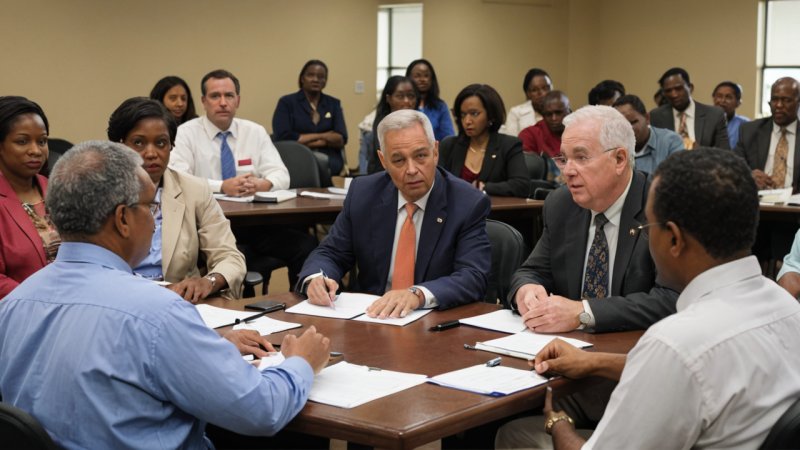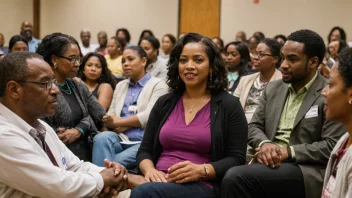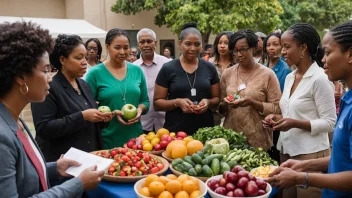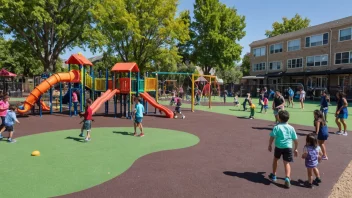In an era where the challenges of urbanization, climate change, and social inequality are ever-increasing, the collaboration between local governments and communities is more critical than ever. Effective partnerships can lead to innovative solutions that address the needs of the people while promoting sustainable development. This article delves into the importance of these partnerships, explores successful case studies, and provides guidance on how individuals and organizations can contribute to this collaborative effort.
The Importance of Local Government and Community Partnerships
Local governments are often the first point of contact for citizens seeking assistance or services. They have the power to implement policies and programs that directly impact the lives of community members. However, the complex nature of social issues requires a collaborative approach. By partnering with community organizations, non-profits, and residents, local governments can leverage local knowledge, resources, and networks to create more effective and inclusive policies.
Enhancing Community Engagement
One of the primary benefits of building partnerships is the enhancement of community engagement. When local governments actively involve community members in decision-making processes, it fosters a sense of ownership and accountability. Residents are more likely to support initiatives that they have a hand in shaping, leading to higher participation rates and better outcomes.
Resource Optimization
Partnerships allow for the optimization of resources. Local governments often face budget constraints, making it challenging to address all community needs. By collaborating with local organizations, governments can pool resources, share expertise, and even access additional funding sources, ensuring that community projects are adequately supported.
Successful Case Studies
Case Study 1: The City of Seattle and the Community Engagement Initiative
In Seattle, the local government launched a Community Engagement Initiative aimed at increasing participation in city planning processes. This initiative involved workshops, surveys, and focus groups to gather input from diverse community members. The result was a more comprehensive city plan that reflected the needs and desires of its residents, leading to improved community satisfaction and trust in local governance.
Case Study 2: The Partnership for Sustainable Communities
The Partnership for Sustainable Communities is a collaboration between the U.S. Department of Housing and Urban Development, the Department of Transportation, and the Environmental Protection Agency. This initiative promotes coordinated investments in housing, transportation, and environmental protection. By working together, these agencies have successfully funded projects that enhance community livability while reducing environmental impact.
Strategies for Building Effective Partnerships
Identifying Common Goals
Successful partnerships begin with identifying common goals. Local governments and community organizations should engage in open dialogues to understand each other’s objectives and find areas of alignment. This step is crucial for creating a shared vision that guides collaborative efforts.
Building Trust and Relationships
Trust is the foundation of any successful partnership. Local governments must demonstrate transparency and accountability in their actions, while community organizations should strive to be reliable and consistent in their engagements. Regular communication and shared experiences can help strengthen these relationships over time.
Leveraging Technology for Collaboration
In today's digital age, technology can play a significant role in fostering partnerships. Online platforms can facilitate communication, data sharing, and project management. Tools like community forums, social media, and collaborative software can enhance engagement and streamline the partnership process.
How Individuals Can Get Involved
Volunteering with Local Organizations
Individuals looking to make a difference can start by volunteering with local organizations that work in partnership with their local government. This involvement not only provides valuable support to these organizations but also allows individuals to gain insights into the partnership dynamics.
Advocating for Community Needs
Community members can advocate for their needs by attending city council meetings, participating in community forums, and engaging with local representatives. By voicing their concerns and suggestions, individuals can influence local policies and initiatives.
Participating in Local Planning Processes
Many local governments offer opportunities for residents to participate in planning processes. Individuals can engage in workshops, surveys, and focus groups to share their perspectives and contribute to shaping their communities.
Current Global Issues Impacting Local Partnerships
The COVID-19 Pandemic
The COVID-19 pandemic has highlighted the importance of strong local partnerships. As communities faced unprecedented challenges, local governments and organizations had to work together to provide essential services, distribute resources, and ensure public health. The lessons learned during this crisis can inform future collaborative efforts.
Climate Change and Environmental Challenges
As climate change continues to pose significant threats, local governments and communities must collaborate to develop sustainable solutions. Initiatives focused on environmental protection, disaster preparedness, and resilience are crucial for addressing these challenges effectively.
Conclusion
Building partnerships between local governments and communities is essential for fostering sustainable development and addressing pressing social issues. Through effective collaboration, these partnerships can enhance community engagement, optimize resources, and create comprehensive solutions that benefit all stakeholders. Individuals have a vital role to play in this process, whether through volunteering, advocacy, or participation in local planning efforts. By working together, we can build stronger, more resilient communities that are equipped to face the challenges of today and tomorrow.






